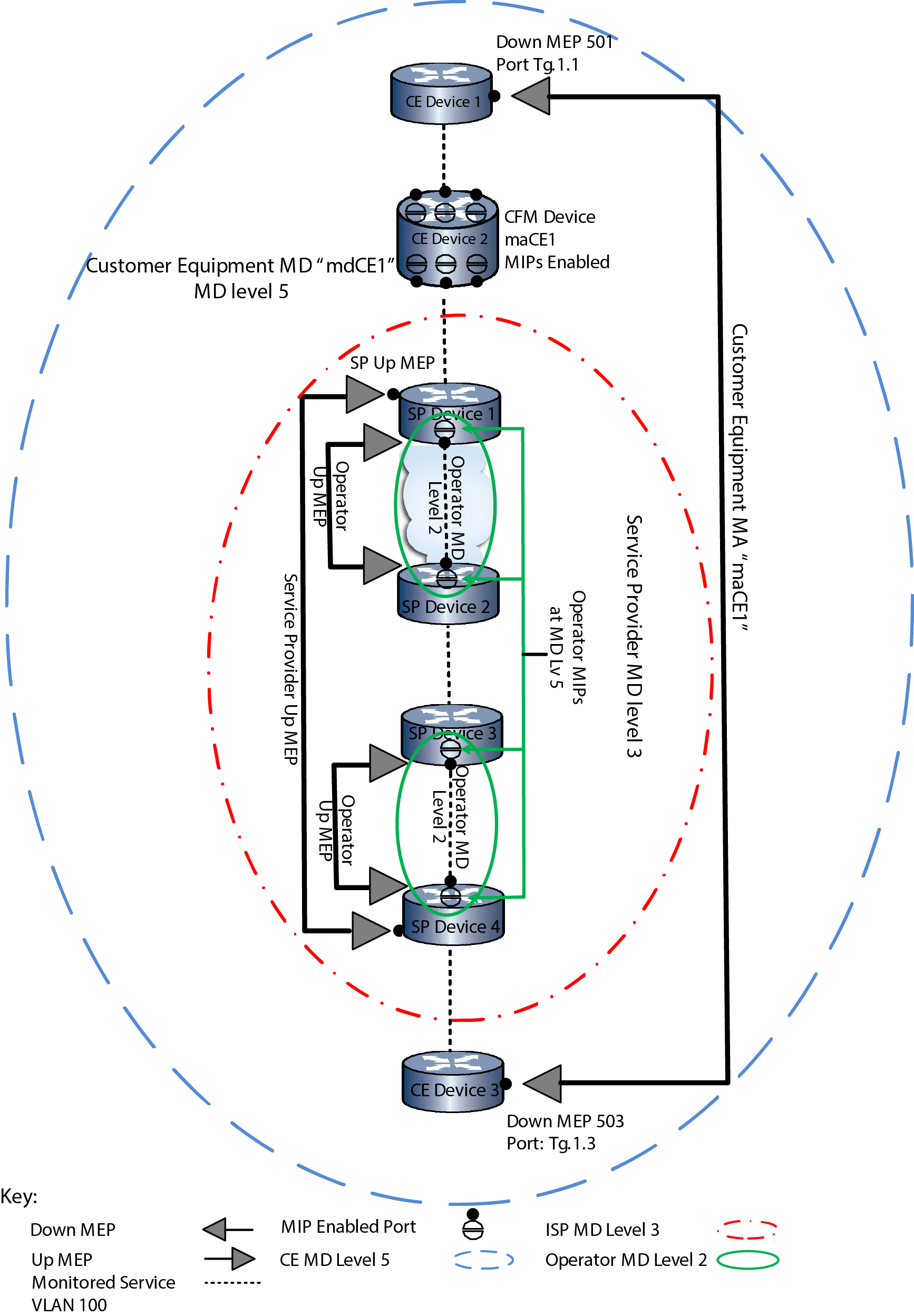A CFM configuration requires multiple MDs when one or more network segments of a monitored service are either not directly under the control of a single administrator or the administrator chooses to segment the network for administrative purposes. Our multiple MD configuration example is a basic customer equipment VLAN monitored service that passes through the service provider MD and two network operator MDs. See the Single MD Configuration Example if you are using CFM in a single administrative control network environment.
The example will provide the customer equipment configuration for the two monitored service end points (CE Device 1 and CE device 3) and a MIP enabled device (CE Device 2) that will snoop CCMs that traverse the service between the two end points. CE Device 2 configuration is representative of all devices within the customer equipment MD (level 5) that reside between the two end points with the exception that enabling MIPs is optional.
See Multiple MD Example Configuration Overview for a presentation of the multiple MD configuration. The configuration of the service provider and network operator MDs is transparent to the customer equipment MD and is discussed only to the extent that it relates to understanding the customer equipment configuration.
In our example, CFM monitors VLAN 100. The customer equipment resides within MD level 5. The service provider equipment resides within MD 3, and the two network operators‘ equipment resides within two MD level 2 domains. The down MEPs 501 and 503 are the two customer service end points for the service. MIPs are enabled on customer equipment CE Device 2 to snoop CCMs that traverse the device. The customer equipment administrator has requested that the network operators enable MIPs on their Up MEPs configured for MD level 5 providing snooping of CCMs from MEPs 501 and 503 that transit the service. This configuration is performed by the network operator administrators. MIPs are not enabled on service provider ports to prevent exposing the customer service network topology within the service provider network.


 Print
this page
Print
this page Email this topic
Email this topic Feedback
Feedback